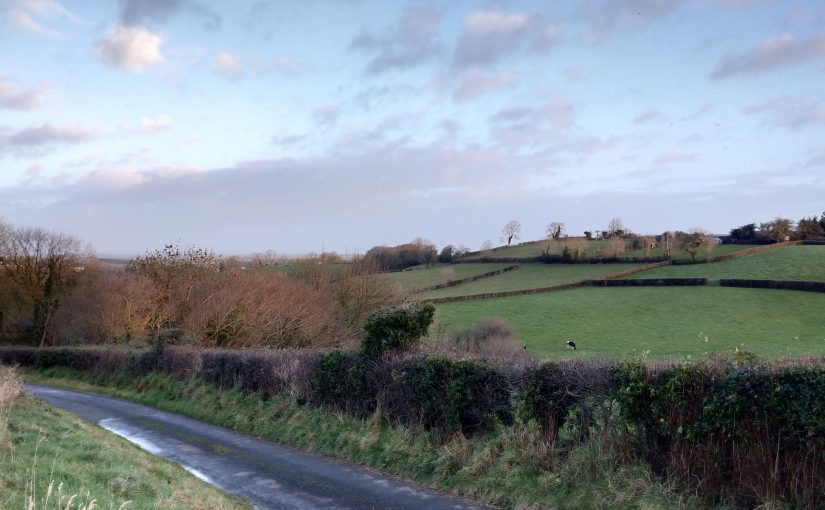Edward Bunting made what looks to me like a live transcription notation of a tune titled “Moggy” into one of his collecting pamphlets in the 1790s. Lets take a quick look at it.
We are looking at the second tune at the bottom of this page. There is a lot of writing associated with the previous tune on the top 3 lines of the page, but I will deal with that all in another post.
For our tune, Bunting has written “Moggy” as a kind of title, and then underneath the tune he has written “stroagh gen misagh g’s Maggy” which we can understand as being his phonetic attempt at “is trua gan mise agus Maggy”. Then he has also written his translation “I wish that Moggy & I”, and an instruction “repeat the 2nd”.

This tune is clearly in 9/8 time, and it is in G minor mode. We can see that the main notes of the tune are G, B♭, C, D, F. There are passing As and one single passing E♭.
Of course neither B♭ nor E♭ are possible in the traditional Irish harp tunings, and so I think we have a few possibilities. One is that this may be a transposed transcription, that it may be notated one note lower than how it would sit on the harp as an A minor mode tune with the harp tuned all naturals. The other strong possibility is of course that this is not transcribed from a harp performance. It may be a transcription from a sung performance or from a fiddle performance.
Title
The title says “Moggy” but the writing underneath seems to say “Is trua gan mise agus Maggy”. Perhaps the “a” in Maggy is just an “o” with an over-drooping serif.
Do we imagine the full title to be “Is trua gan mise agus Moggy”, or is this a lyric that can be sung to the tune? It seems to have the right stress pattern especially for the bar 7, if we sing “‘s trua gan mise gus Moggy”.
Other versions
We can check my Tune List Spreadsheet and my MS4.29 index to see that Bunting doesn’t seem to have done anything with this tune, so all we have is this notation in MS4.29 page 197. He doesn’t seem to have made any piano arrangements of it, and so we don’t have any of the attribution tags he often puts on his piano versions. He also doesn’t seem to put it into any tune lists or anything, apart from the title “Moggy & I” being written in pencil on the next page.
I am not finding any version of this tune or title anywhere else either. Hopefully you will recognise the title or the tune and post something for us in the comments below!
Many thanks to Queen’s University Belfast Special Collections for the digitised pages from MS4 (the Bunting Collection), and for letting me use them here.
Many thanks to the Arts Council of Northern Ireland for helping to provide the equipment used for these posts, and also for supporting the writing of these blog posts.


The mountain seers in our Southeastern Appalachians would roll small animals bones, reading them as a portent. That’s what it seems you are doing, Simon, rolling the bones, but reading the past, instead of the future, quite a gift you’ve been given.
The second descent (can’t read music, sorry) sounded like a portion of Greensleeves to me.
Thank you for sharing another amazing discovery, you are the best.